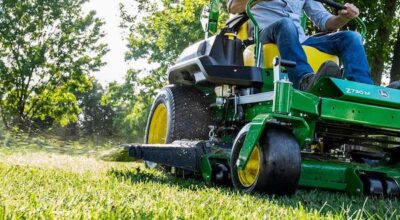As is the case with most equipment, a lawn mower inspection is essential to ensuring that your machine remains in working order for years to come. Regular and thorough cleaning of the machine, combined with other routine maintenance procedures, can help you ensure that you’re getting the most out of your mower each time. Let’s take a look at some of the lawn mower inspection tips you should take into account to get the most out of your machine.
- Before doing any checks, remember to recognize the safety information, understand the safety signals, and be familiar with your operator’s manual.
- Prior to using your machine, check the fuel level, engine oil level, and inspect the air filter.
- To check your fuel level, view the indicator in front of the machine.
- To gauge the oil, use the dipstick and make sure the oil level is between the “Full” and “Add” marks. Remove the dipstick and wipe it off before placing it back in the tube, taking care not to screw it down. Pull it back out to read the oil level. Ensure that the dipstick is replaced and tightened appropriately when you are finished.
- To check the air filter, remove the air cleaner cover for access. Do not attempt to clean or wash the filter components.
- When you are ready to operate your machine, remember to always start and shut down the engine with the throttle in the 1/2 position.
- When engaging the mower deck or PTO, the throttle should also be in the 1/2 position, and then ramped up to the full-throttle position.
- Always mow in the full-throttle position. This ensures that your engine and hydraulics stay within proper operating temperature range.
- Once you are finished mowing, clean your machine prior to storage. Avoid using water to clean the mower, especially cold water on a hot engine or machine. Instead, clean with high volume, low-pressure air, such as a leaf blower. As you clean, focus on the following areas: deck shell, under spindle covers, foot platform, engine area, and cooling fins.
- Remember to review your operator’s manual for additional maintenance information, as well as the daily checklist of operations located on the machine.
By regularly performing these procedures, you can reduce downtime, improve machine performance, and keep your mower operating smoothly for years to come.
If you have any questions about your John Deere mower, you can contact your local John Deere dealer.
If you enjoyed this post or want to read others, feel free to connect with us on Facebook, Pinterest, or Twitter!


